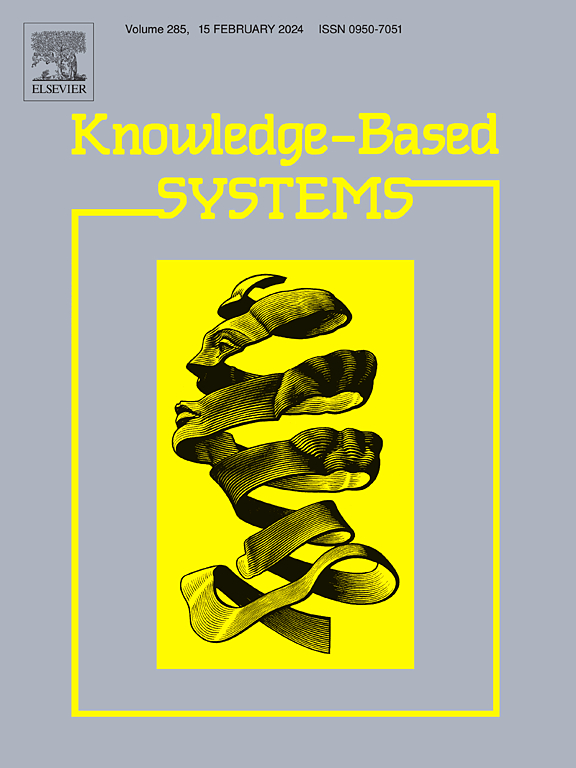预算影响最大化的残差图强化学习
IF 7.6
1区 计算机科学
Q1 COMPUTER SCIENCE, ARTIFICIAL INTELLIGENCE
引用次数: 0
摘要
预算影响最大化(BIM)问题在关键节点识别、社交媒体营销、谣言压制等领域得到了广泛的应用。如今,网络在结构和规模上都呈现出显著的变化。基于图强化学习(GRL)的方法是解决BIM问题的常用方法。然而,在不同的结构和尺度下,基于grl的方法在扩展效应方面表现不佳。这种限制源于他们无法有效地捕捉和利用当地社区结构中复杂的关系。为了解决这个问题,我们提出了一种新的基于残差图强化学习(RGRL)的框架,该框架包含三个关键设计:(1)基于社区检测算法的网络划分机制来识别密集子图;(2)结合全局训练和子图执行的混合框架,增强了RGRL的搜索能力,特别是在有效学习子图级和全局邻域信息方面;(3)残差图神经网络捕获全局信息和子图邻域信息,以更好地选择种子节点。我们在四个不同规模的开源数据集上评估了我们提出的RGRL模型以及五种基线方法。实验结果表明,RGRL在IC、LT和SIS信息传播模型上的改进最大,分别提高了11.21%、60.80%和12.91%。本文章由计算机程序翻译,如有差异,请以英文原文为准。
A residual graph reinforcement learning for budgeted influence maximization
The Budgeted Influence Maximization (BIM) problem has been widely applied like critical node identification, social media marketing, and rumor suppression. Nowadays, the networks exhibit significant variations in both structure and scale. Graph Reinforcement Learning (GRL)-based methods are commonly employed to solve the BIM problems. However, the GRL-based methods suffer from lower performance in spread effect with diverse structures and scales. This limitation arises from their inability to effectively capture and leverage the intricate relationships within local neighborhood structures. To address this, we propose a novel Residual Graph Reinforcement Learning (RGRL)-based framework, which incorporates three key designs: (1) A network partitioning mechanism based on community detection algorithms to identify dense subgraphs; (2) A hybrid framework combining global training with subgraph execution to enhance the search capability of RGRL, particularly for effectively learning both subgraph-level and global neighborhood information; and (3) A residual graph neural network that captures global information and subgraphs neighborhood information for better selecting the seed node. We evaluate our proposed RGRL model alongside five baseline methods on four open-source datasets of varying sizes. The experimental results demonstrate that RGRL achieves the maximum improvements in IC, LT, and SIS information propagation models, with increases of up to 11.21%, 60.80%, and 12.91%, respectively.
求助全文
通过发布文献求助,成功后即可免费获取论文全文。
去求助
来源期刊

Knowledge-Based Systems
工程技术-计算机:人工智能
CiteScore
14.80
自引率
12.50%
发文量
1245
审稿时长
7.8 months
期刊介绍:
Knowledge-Based Systems, an international and interdisciplinary journal in artificial intelligence, publishes original, innovative, and creative research results in the field. It focuses on knowledge-based and other artificial intelligence techniques-based systems. The journal aims to support human prediction and decision-making through data science and computation techniques, provide a balanced coverage of theory and practical study, and encourage the development and implementation of knowledge-based intelligence models, methods, systems, and software tools. Applications in business, government, education, engineering, and healthcare are emphasized.
 求助内容:
求助内容: 应助结果提醒方式:
应助结果提醒方式:


